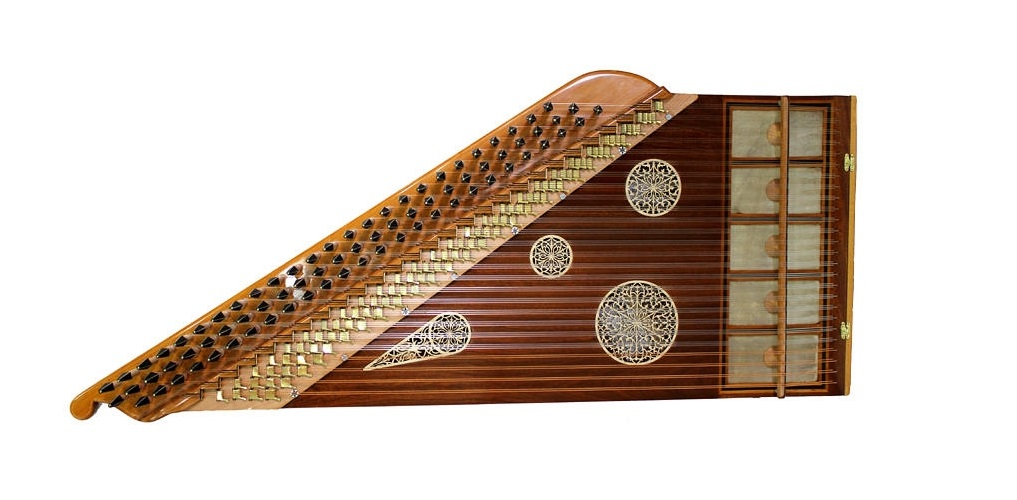The Qanun is a trapezoidal zither-like stringed instrument consisting of about 78 to 81 strings stretched over a trapezoidal sounding board. In Arabic, the word qanun means 'law', synonymous with the word canon in English and derived from Kanon in Greek, and this name was possibly chosen because of the loudness, clarity, and accuracy of maintaining fixed pitches.
The Qanun takes a key role as a naqr instrument in the ensemble and it has been known to take the role of the tarjama or to accent the iqa'. The Qanun is played either solo or more often as part of an ensemble, in much of the Middle East, North Africa, Central Asia, and southeastern regions of Europe. More than any other instrument in an Arab orchestra, the Qanun is best suited for the display of virtuosity and the deployment of rapid scale.
Players place the qanun horizontally resting across the knees or on a special table before them, with the tuning pegs to the left and the longest string close to the body.
Most of the Qanun strings are stretched in a group of three that are tuned identically to make one pitch. Each stringcourse passes over a series of small brass levers on the left-hand side, which are used to make microtonal pitch adjustments. In Arabic, the brass levers are called ‘urab’. They are constantly raised back and forth during a performance to create microtonal pitches adjustments using the fingernail of the left thumb.
The Qanun consists of three octaves and a half and the player initially sets the levers to build the starting Maqam.
The performer plucks the strings with short horn plectra positioned between the tips of each index finger and a small metal ring. (Plectra+rings)
